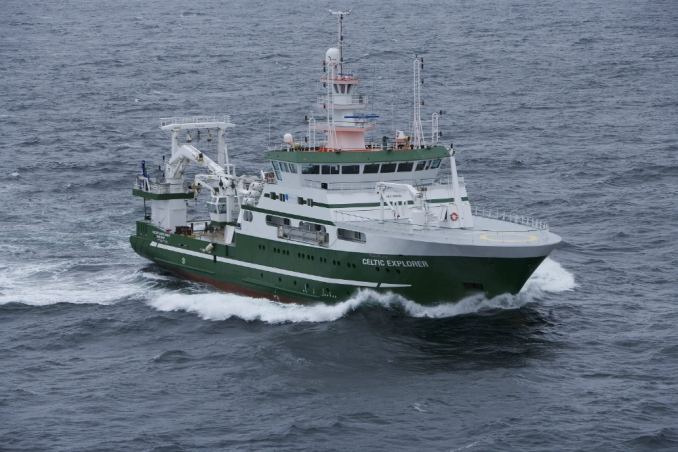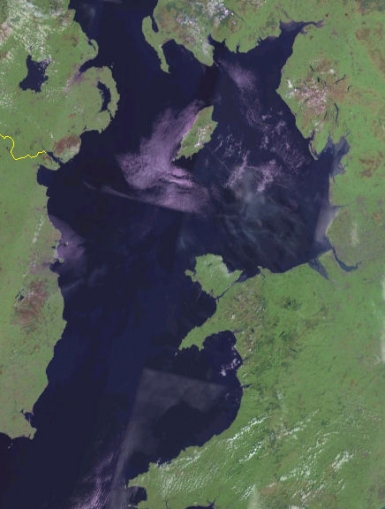Expedition underway to explore submerged prehistoric landscapes of the Irish Sea
The “Europe’s Lost Frontiers” research team, along with the Institute of Technology Sligo, University College Cork, researchers from the University of Wales Trinity Saint David and the Irish Marine Institute, are at present undertaking a survey, using the Irish Marine Institute RV Celtic Explorer, to explore the extensive prehistoric submerged landscapes of the Irish Sea. The Irish Sea (Irish: Muir Éireann / An Mhuir Mheann, Manx: Y Keayn Yernagh, Scottish Gaelic: Muir Èireann, Welsh: Môr Iwerddon) is connected to the Celtic Sea in the south by St George's Channel, and to the Inner Seas off the West Coast of Scotland in the north by the Straits of Moyle or the North Channel. On occasion it is referred to as the Manx Sea (Irish: Muir Meann, Manx: Mooir Vannin, Scottish Gaelic: Muir Mhanainn).
The expedition aims to recover archaeological evidence from marine cores. A key outcome of the project will also be to reconstruct the palaeo-environments of the Irish Sea using environmental data extracted directly from the sediment cores. Up to 20 core locations will be sampled within these areas and high-precision geophysical data will be provided at each of the core locations. After the last Ice Age, significant areas of habitable land were flooded following climate change. The sea level rose across the world and an area more than twice that of the modern United States of America was lost to the sea.
Beneath the waves of the Irish Sea is a hidden prehistoric ‘palaeolandscape’ of plains, hills, marshlands and river valleys. Evidence of human activity is likely to be preserved in this unexplored landscape. This present survey is the first time that a wide range of techniques has been employed on submerged landscapes under the Irish Sea. The research will aim to discover how, why, where and when our ancestors lived on a landscape that today is located beneath the waters of the Irish Sea.








